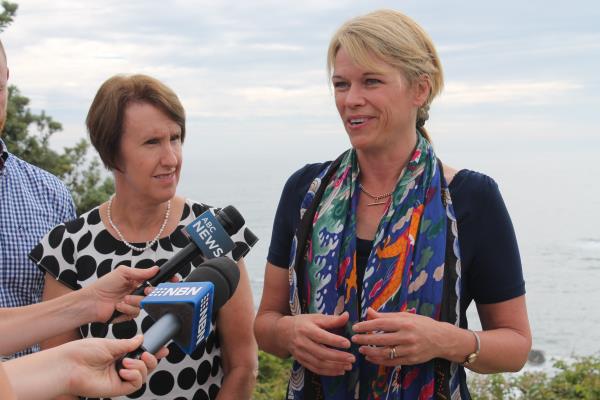
A NEW $900,000 artificial reef will be built off the coast of Port Macquarie.
NSW Minister for Primary Industries Katrina Hodgkinson and Port Macquarie MP Leslie Williams made the announcement during a visit to Port Macquarie last week.
Ms Hodgkinson said the offshore artificial reef would be the third which the NSW Government had built since 2011, joining the successful artificial reef off Sydney and the recently announced artificial reef off Shoalhaven Heads on the South Coast.
“The Port Macquarie region is already an incredibly popular fishing destination for recreational fishers and this new offshore artificial reef will only add to that popularity,” Ms Hodgkinson said.
“The Port Macquarie, Sydney and Shoalhaven Heads offshore artificial reefs are all funded from the Recreational Fishing Trusts and are a terrific example of how the NSW Government is re-investing money from the sale of the NSW Recreational Fishing Fee back into projects which directly benefit the more than one million recreational fishers in NSW.
“To date, the Recreational Fishing Trusts have funded more than $130 million worth of projects to improve recreational fishing opportunities in NSW.”
Ms Hodgkinson said construction of the artificial reef was expected to take about two years.
“Once constructed, the reef will in a very short time develop into a complex reef habitat supporting a diverse fish community, which will attract many iconic fish species including Spanish mackerel, cobia, pear perch and snapper,” she said.
Mrs Williams said the proposed reef – expected to be located in water about 30 metres deep within easy access from the entrance to the Hastings River – will boost tourism in the Port Macquarie region.
“The Department of Primary Industries will now undertake a detailed environmental assessment and extensive consultation with recreational and commercial fishers and other stakeholders before a final location is selected,” Mrs Williams said.
“It is proposed to construct the Port Macquarie offshore fishing reef using multiple concrete purpose-built artificial reef units which will be lowered to the ocean floor to form clusters.
“Depending on the dimensions of the final concrete reef design selected, between 20 and 40 concrete units will be used to construct a series of clusters that will form patches of the 800 cubic-metre reef.”
Mrs Williams hoped that some local companies might tender for the project, which will entail submitting a design proposal in addition to actually making the modules for the reef, which are normally made out of concrete.

